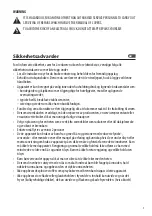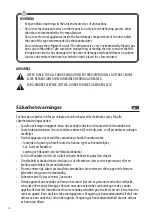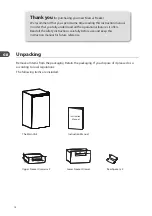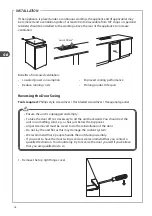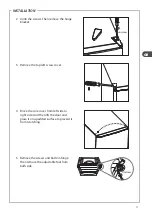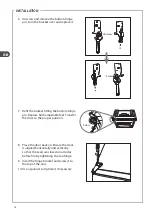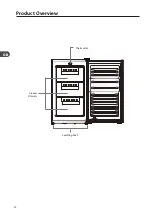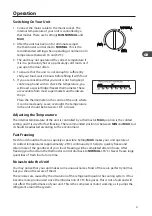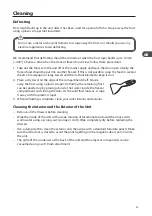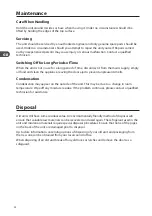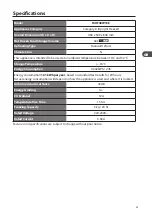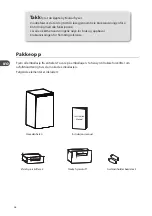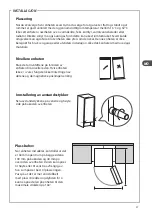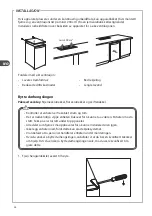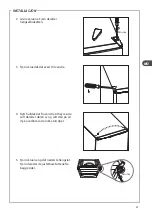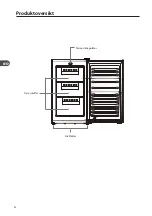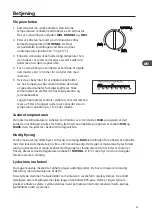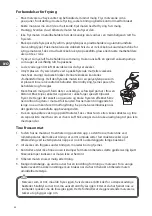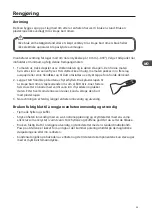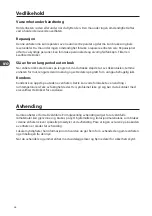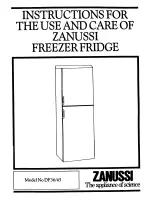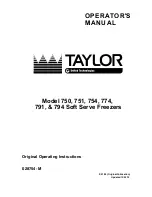
22
GB
Preparations for Freezing
• Use quality food and handle it as little as possible. Freeze food in small quantities as it freezes
faster, takes less time to defrost and enables you to control the quantity you need better.
• Leave cooked food to cool completely. Chill food before freezing if possible.
• Consider how you will want to cook the food before freezing it.
• Don’t freeze food in metal containers if you may want to microwave it straight from the
freezer.
• Use special freezer bags, freezer film, polythene bags, plastic containers, and aluminium foil
(heavy duty grade only). If in doubt, double wrap your food. Don’t use aluminium foil for
acidic foods, e.g. citrus fruits. Don’t use thin cling film, glass, or used food containers without
cleaning.
• Exclude as much air from the container as possible. You could buy a special vacuum pump
which sucks excessive air out of the packaging.
• Leave a small amount of air space when freezing liquids to allow expansion.
• You can use the space in the freezer most efficiently if you freeze liquids (or
solids with liquids, e.g. stew) in square blocks. This is known as “Preforming”.
Pour the liquid into a polythene bag which is inside a square sided
container. Freeze it, and then remove it from the container and seal the
bag.
• Label your frozen foods as they will look the same when in frozen state. Use
special freezer tapes, labels and pens with different colours. This allows you
to easily organise and to effectively use the freezer. Write the contents and
date; otherwise the frozen food might exceed the storage time and this
could cause food poisoning. Please refer to your food packaging for the
recommended storage time.
• You may also add the weight and cooking notes, e.g. “defrost first”, “cook from frozen” and
keep a separate log of what is in each drawer. This will save opening the door and searching
around unnecessarily.
Defrosting Frozen Food
1. Take the frozen food out from the unit and uncover the frozen food. Let it defrost at room
temperature. Don’t forget that defrosting in a warm area encourages the growth of bacteria
and low temperature cooking may not destroy dangerous bacteria.
2. Drain off and throw away any liquid lost during defrosting.
3. Always make sure there are no ice-crystals in the food before cooking, particularly with meat.
These crystals indicate that the food has not fully defrosted.
4. Cook food as soon as possible after defrosting.
5. Many microwaves and ovens have a defrost setting. To avoid bacterial build up, only use
these if you intend to cook the food immediately afterwards.
Never re-freeze anything that has been defrosted out unless you cook it again, to kill
off harmful bacteria. Never re-freeze defrosted shellfish. Re-seal packs properly after
removing items. This prevents drying or freezer-burn and a build up of frost on any
remaining food.
Содержание MUF48W13E
Страница 2: ......
Страница 20: ...20 GB Product Overview Thermostat Levelling Feet Freezer Drawers...
Страница 32: ...32 NO Produktoversikt Fryserskuffer Termostatregulator Niv f tter...
Страница 44: ...44 SE Produkt versikt Frysl dor Termostatkontrollratt Justerbara f tter...
Страница 56: ...56 FI Tuotteen yleiskatsaus Pakastinlokerot Termostaatin ohjausvalitsin S dett v jalka...
Страница 68: ...68 DK Produktoversigt Skuffer til fryseren Termostatknap Justerbare f dder...
Страница 74: ......
Страница 76: ...IB MUF48W13E 150121V4 DSG Retail Ltd co no 504877 Maylands Avenue Hemel Hempstead Hertfordshire HP2 7TG UK...


